Installing a ceiling fan has several quick benefits, especially during the height of summer heat. First, the average ceiling fan installation cost isn’t too high, starting at $100 on the lower end. Second, it provides an immediate way to cool down without relying solely on sweat and lukewarm water.
If you’re tired of having a stuffy, stale bathroom, installing a ceiling fan can make a big difference and increase the airflow in your home. The ceiling fan installation cost will vary depending on different factors, including the labor cost to replace a ceiling fan and the overall fan installation option you choose in the end.
Click here to learn about doorbell installation cost guide.
How Much Does Celing Fan Installation Cost?
For a mid-range fan installation, the cost can range between $120 and $180. For higher-end installations, the cost can be $2,000 or more. If new wiring is needed, the cost of ceiling fan installation can range from $450 to $600, including both the fan and labor.
The total cost to replace a ceiling fan ranges from $100 to $360, with labor alone costing between $50 and $200. New ceiling fans are priced between $80 and $300, depending on size and style.
The cost of ceiling fan installation varies based on the specific project, with average rates starting at $30 per hour for mounting, replacement, and repair tasks.
As an electrician, I often emphasize the cost-effectiveness of ceiling fans. They offer efficient cooling and significantly reduce energy bills, making them a smart investment for any home.
– Hugo Balbuena
Factors Affecting Ceiling Fan Installation Cost
There are several factors to consider when calculating the cost and expenses of ceiling fan installation.
Understanding Labor Costs
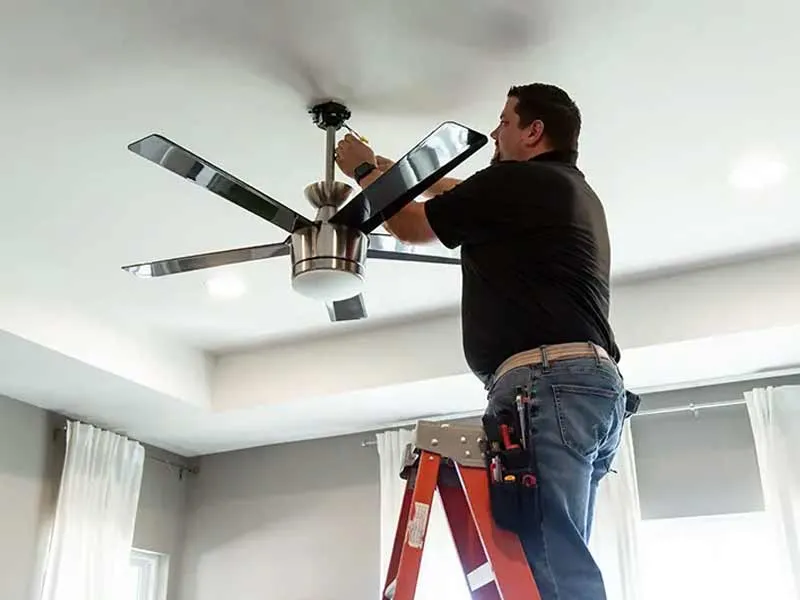
Typical labor costs range from $80 to $200, but can vary by location. Generally, labor costs are higher in densely populated urban areas and lower in rural areas.
Switch Installation In Ceiling Fan Projects
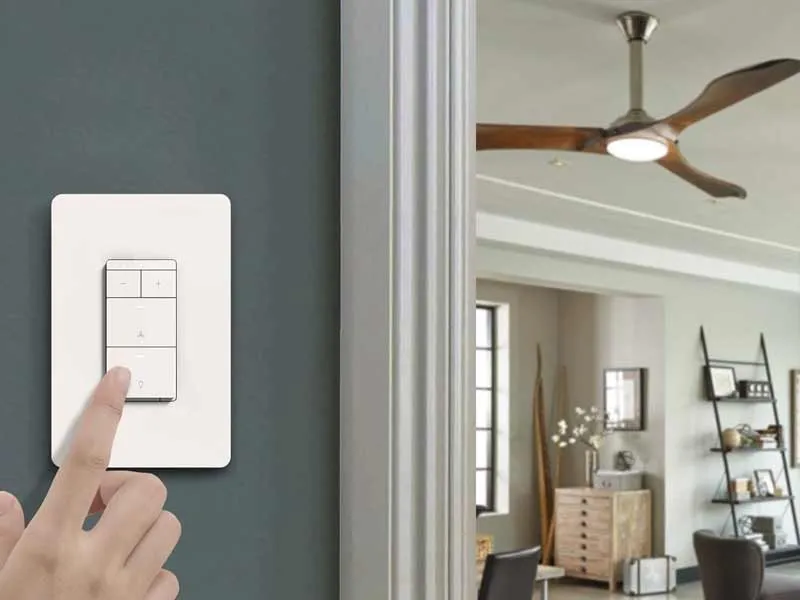
Switch installation can cost between $100 and $160. Many homeowners agree that the convenience of being able to control the light and fan separately is usually worth the price.
Factors Influencing Multiple Ceiling Fan Installations
It may cost more to install several fans than installing just one, but it’s best to schedule multiple ceiling fan installations on the same day to lower the costs. If the electrician has to come to the house more than once, even for the same fan installation job, travel fees will apply each time.
Professional Wiring Installation
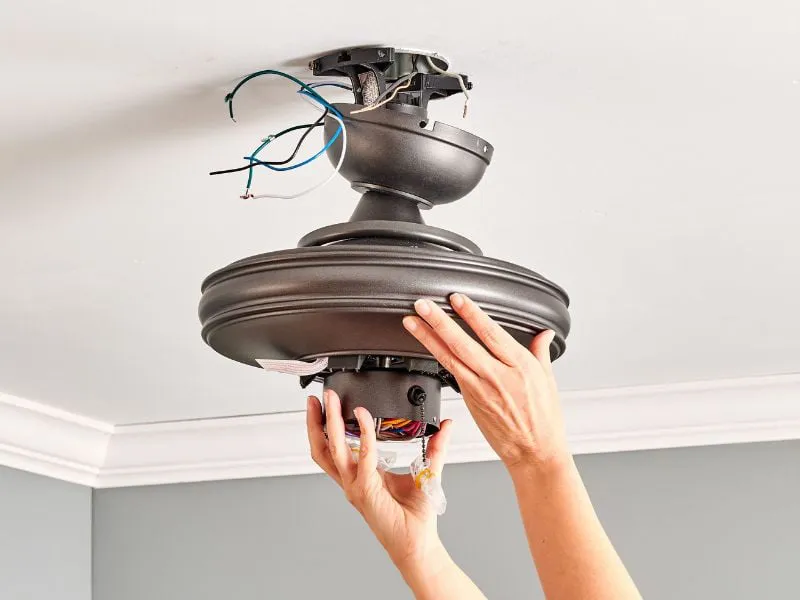
Wiring installation costs between $450 and $600, including wiring, switches, circuits, and electrical boxes. Outdoor ceiling fans are pricier than indoor ones due to their need to withstand moisture and direct contact with rain, snow, or ice.
Ceiling Fan Accessories
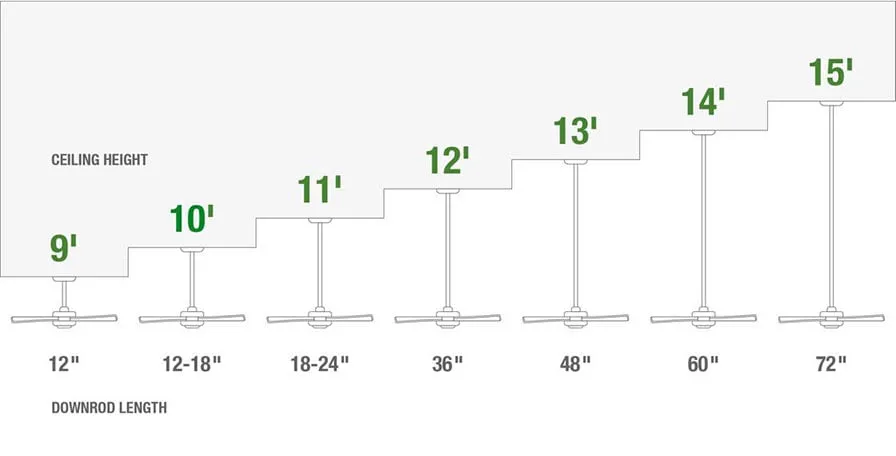
Additional fan accessories may include remote control units ($35-$65) for adjusting fan speed, lighting, and on/off options, as well as wall switches. Downrods, which are used to properly position the fan in rooms with high vaulted ceilings, can range from $15 to $85 depending on the length. Other accessories may involve decorative light shades to customize the fan and complement your home’s style.
Summary of Additional Ceiling Fan Installation Costs
Types Of Ceiling Fan
There are various types of ceiling fans, and multiple factors should be considered when installing one.
Directional Ceiling Fan

Stylish yet often less complex, the directional ceiling fan ranges in price from $120 to $150, depending on size and design. These fans are easily adjustable to direct air where it’s needed most. A directional or attic fan installation is more common in small rooms.
Standard Ceiling Fan

A standard ceiling fan installation can cost between $100 and $140. Many fans include a light fixture and are customizable with five blades made from wood, plastic, metal, or fiberboard.
Low-Profile Ceiling Fan
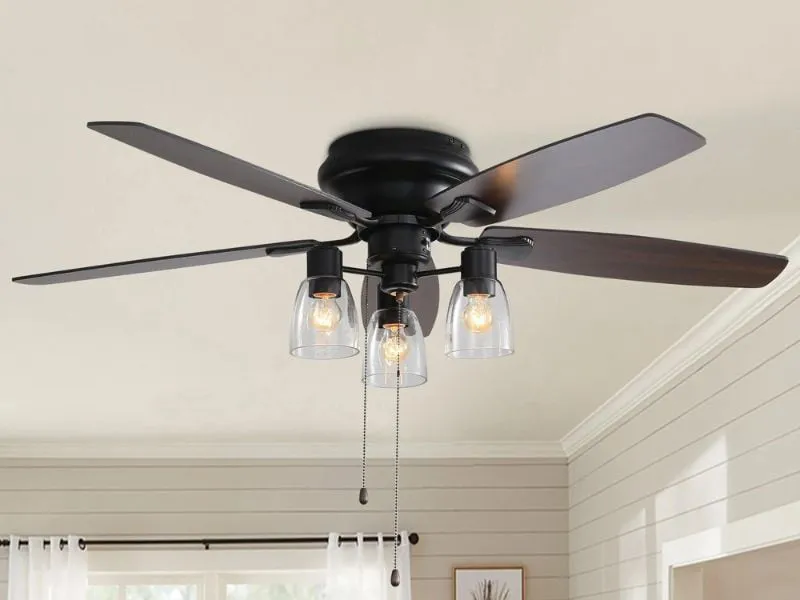
Low-profile ceiling fans are perfect for rooms with ceilings under 8 feet high. They are priced between $100 and $125 and are directly mounted on the ceiling.
Pros of Ceiling Fans
Save Electricity and Lower Utility Bills

Ceiling fans use minimal electricity for maximum airflow, helping you keep utility bills low. Running the fan in milder weather can also save electricity and money on air conditioning.
Enhancing Air Circulation

Ceiling fans are great for air circulation and ventilation in a stuffy room. A ceiling fan can provide a cool breeze in the summer, and force warm air that’s collected in the ceiling down to help keep you warm in the winter. This goes the same way for bathroom exhaust fan installation.
Enhanced Illumination
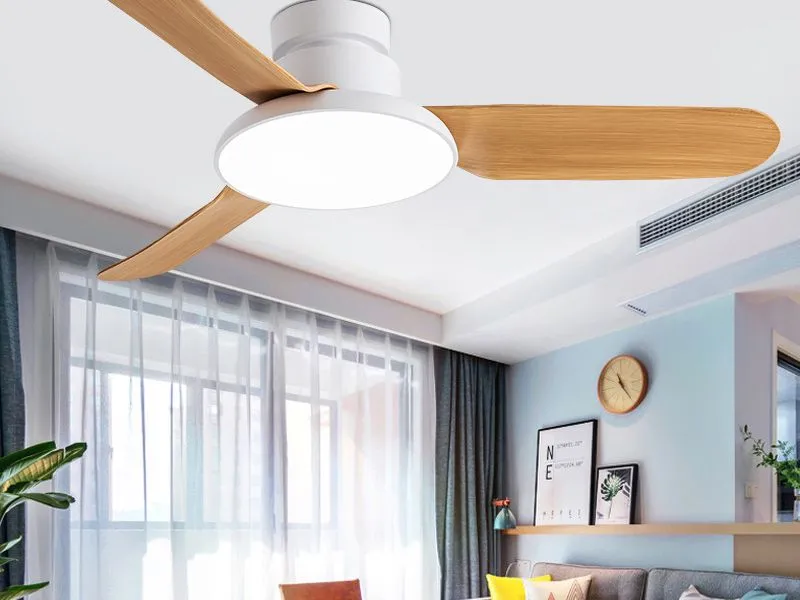
Ceiling fans often contain lighting that can illuminate a room better than table or floor lamps.
Navigating Ceiling Fan Replacement Costs
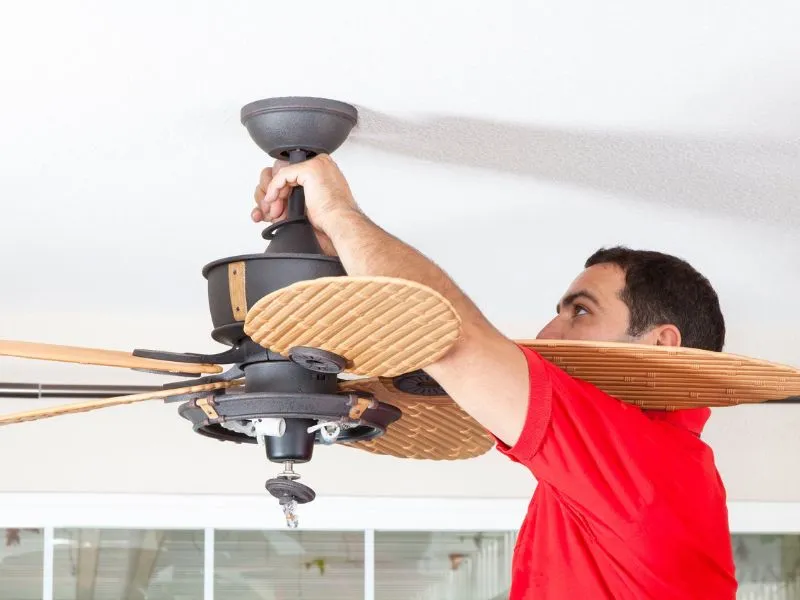
The average cost for installing a ceiling fan is $248, with typical costs ranging from $144 to $360. More complex installations may cost as much as $400. It’s important to consider labor costs as well, which typically range from $80 to $85 per job. Residential ceiling fans can range from $100 to $360, while commercial fans can cost $600 or more.
Comparing Costs: Ceiling Fans vs. Air Conditioning

The cost difference between a ceiling fan and air conditioning varies for several reasons. The average cost to install central air conditioning is $2,500 to $7,500. The cost to run a ceiling fan ranges from $100 to $250 per year, depending on the fan size, energy efficiency, and local utility rates.
DIY Installation Tips and Safety Precautions
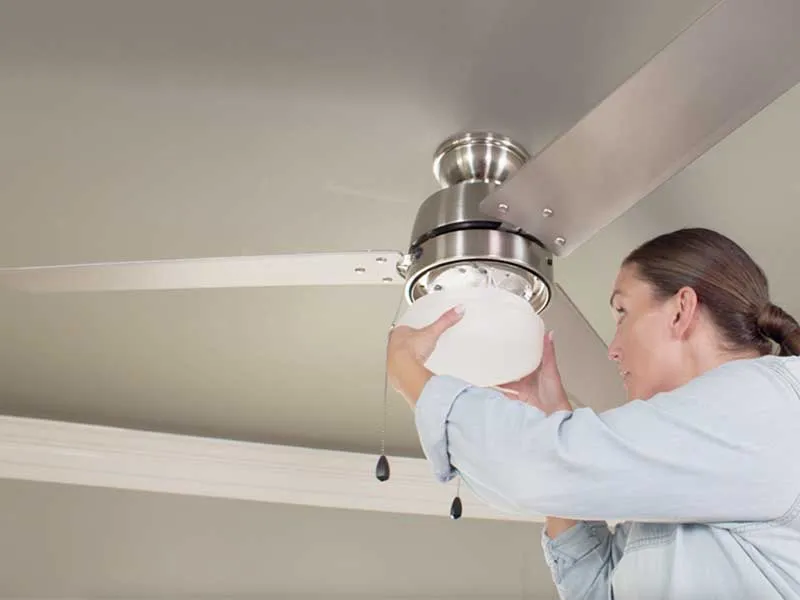
Installing a ceiling fan can be a rewarding DIY project, but it’s essential to prioritize safety. Here are a few tips and precautions to keep in mind:
- Turn off the power: Before starting any work, turn off the power to the area where you’ll be installing the ceiling fan to avoid the risk of electrical shock.
- Use the right tools: Ensure you have the necessary tools, such as a voltage tester, wire stripper, and screwdrivers, to safely and effectively install the fan.
- Secure the fan properly: Make sure to securely mount the fan to the ceiling using the appropriate hardware and follow the manufacturer’s instructions carefully to prevent accidents.
Smart Fan Technology
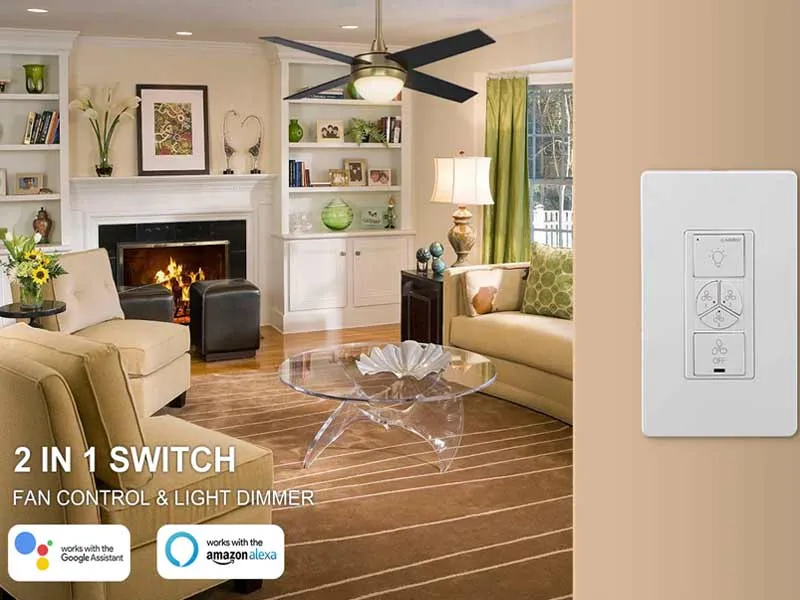
When it comes to the costs of smart fan technology, it’s important to consider both the initial investment and the long-term savings. Smart ceiling fans with advanced features such as Wi-Fi connectivity and voice assistant compatibility may have a higher upfront cost compared to traditional fans. However, the potential energy savings and convenience offered by these smart features can result in long-term cost savings. Additionally, factors such as brand, design, and additional features can also impact the overall cost of smart fan technology. It’s essential for consumers to weigh the initial cost against the long-term benefits when considering the investment in smart fan technology.
Hiring Professionals for Ceiling Fan Installation
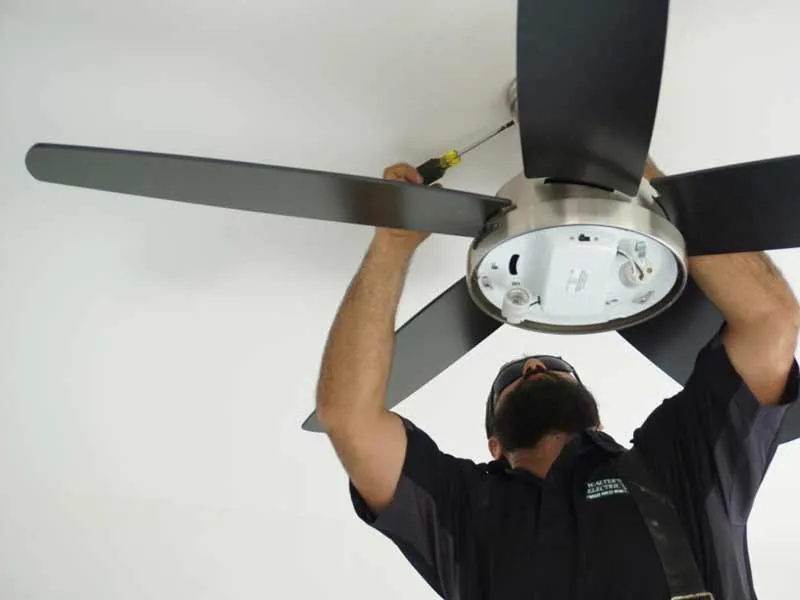
It is advisable to seek the assistance of a professional ceiling fan installer to ensure that the wiring is done correctly and meets the required standards, particularly if the ceiling is not already wired for a fan. Experienced professionals will have all the necessary tools and safety equipment to carry out the ceiling fan installation. Hiring a professional ceiling fan installation company is a good option as they can handle the installation, replacement, repair, and removal of ceiling fans at an affordable cost.
Frequently Asked Questions
What is the average cost to install a ceiling fan?
The average cost to install a ceiling fan typically ranges from $144 to $353, with complex installations potentially reaching up to $600.
How long does it typically take to install a ceiling fan?
Basic ceiling fan installation usually takes about an hour or two to complete. However, more complex installations involving wiring or switches may require up to three or four hours.
Are there any considerations for installing ceiling fans on sloped ceilings?
Yes, installing a ceiling fan on a sloped or vaulted ceiling may require special mounting hardware and additional considerations. It’s essential to account for these factors to ensure proper installation and operation.
What maintenance tasks are recommended for prolonging the lifespan of a ceiling fan?
Routine maintenance tasks for ceiling fans include cleaning the fan blades, tightening screws and connections, and lubricating moving parts. Performing these tasks regularly can help prolong the fan’s lifespan and prevent costly repairs.

